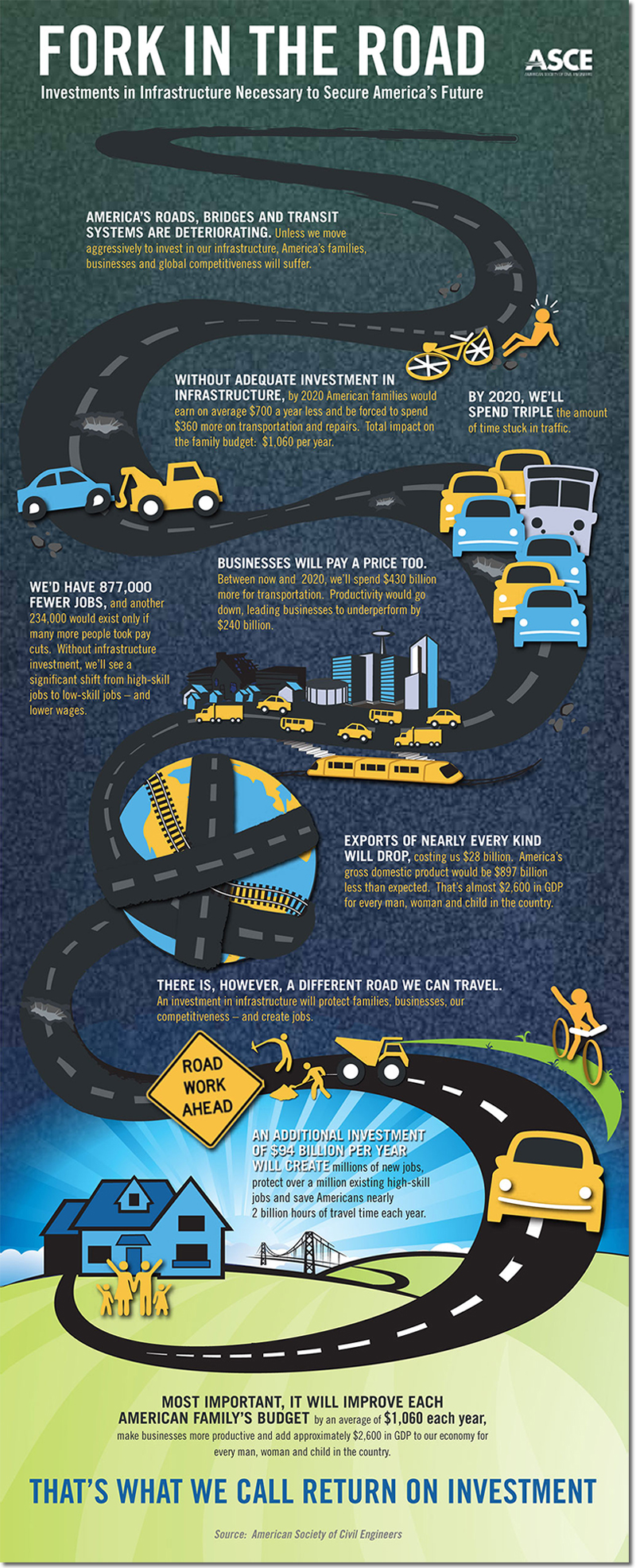- January 14, 2015
- 5:16 pm
- John Caltagirone
- no comments
U.S.’s 2015 Infrastructure Plans

Above is an information graph of “Forks in the Road,” regarding to the United States’s deteriorating infrastructure. In which chase the phrase, Forks in the Road” is a quite literal expression.
Anthony Foxx, the U.S. Transportation Secretary reports that it will cost much more in the future if the issues are not addressed today. Foxx believes that the transportation infrastructure needs to be approached as “a system of systems” in order to get all parts of it working together.
Currently a report is being compiled by the U.S. Department of Transportation that is using data from the Miller Center at the University of Virginia and the American Society of Civil Engineers. The ASCE reported that in 2013, it would take about $3.6 trillion of investment by 2020 to be able to meet the infrastructure needs while the Miller Center reported that maintaining this infrastructure would cost around $134 billion to $194 each year through 2035. Foxx believes that finding a new source of funding but rather how the money is best spent.
With the South and West of the United States rapidly populating, there is also an existence of lacking support of infrastructure in terms of roads and public transits while the Northeast and Midwest are looking to repair and replace existing and outdated infrastructure. The report seems optimistic in technology and social movements transforming the establishment of new infrastructure including the influence of the Uber application and alike taxi applications, the growing popularity of public transportation and biking, and the shift to online ordering these new pieces of infrastructure will be made accordingly.
The infrastructure problem has a much larger effect on the competitiveness of a nation. For logistics companies it is most definitely an impacting force especially in terms of competitive advantages they have currently existing. When compared to countries like China and India, the U.S. has many more reliable methods of transportation due to their more advanced forms of transportation and developed roads. But as this infrastructure deteriorates so will the competitiveness in the market.
For those who have time and are interested, check out the video below of Anthony Foxx speaking at MIT about US infrastructure.
– Riti Patel, Assistant, Supply and Value Chain Center
Sources:
1. http://www.supplychainquarterly.com/topics/Logistics/scq200804infrastructure/